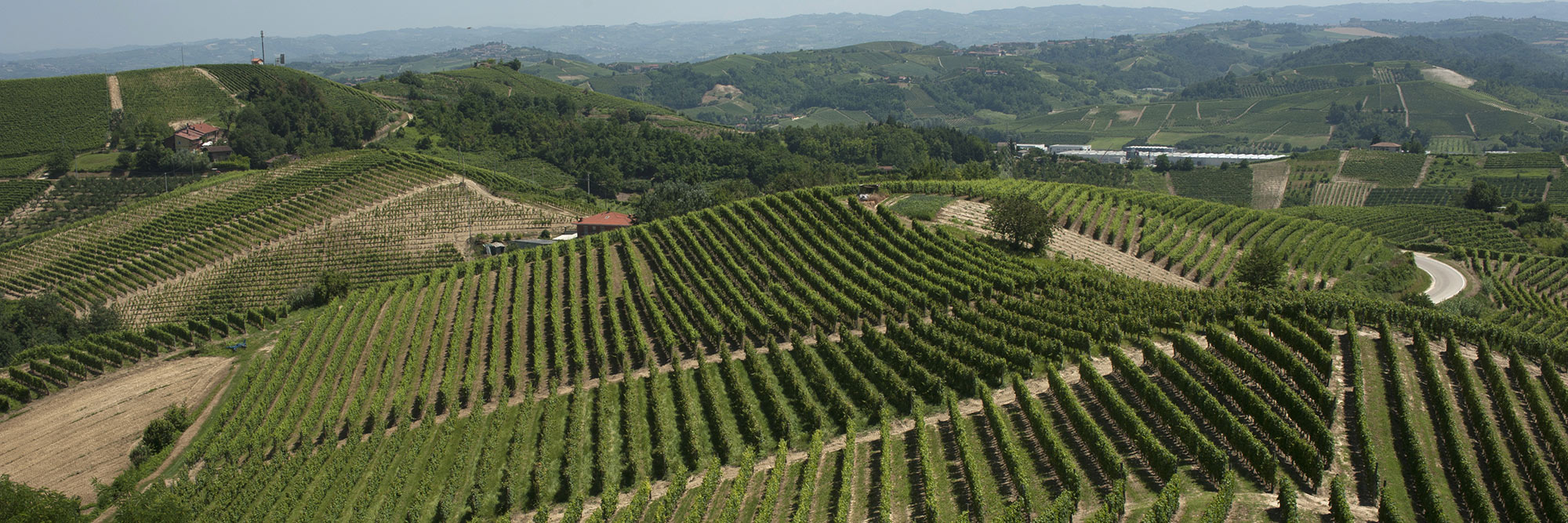Terroir
Located in the heart of Piedmont, where
Roero, Langhe, and Monferrato meet, the vineyards of the Povero family are wisely distributed to accommodate the different predispositions of the three Piedmontese terroirs:
 Roero
Roero (Roé in Piedmontese) is in the north-eastern part of the Cuneo province up to the left bank of the
Tanaro river, beyond which the
Langhe territory starts. It takes its noble name from the
Roero Counts, who dominated on this territory from the medieval period and for several centuries. The sun-facing hillsides are sometimes so inaccessible that it seems impossible to carry out human work. Humble
“ciabòt”, fascinating examples of spontaneous peasant architecture, give the environment a fairytale halo. On the hilltops, superb castles and tall towers tell of a lively middle age era.
Of rare and
varied beauty is landscape that alternates the vine, the forest, colorful orchards, majestic chestnut trees, towering pines, coy valleys, and the strong suggestion of wild hillsides. Small hilly vineyards are naturally located as mosaic tiles and draw regular geometries on lands kneaded by the sands of marine origin. The
sandy, soft, and
permeable soils of Roero, suitable to white wines, host an ancient variety, mentioned already at the end of the ‘400 and often remembered as “Renexium”, which gives a stylish nectar:
Roero Arneis.
Monferrato (Monfrà in the Piedmont dialect) lies mainly within the provinces of Alessandria and Asti and extends south from the hydrographic right-hand side of the
Po river until the foot of the Ligurian Apennines. Small and delicious valleys, which offer open and uniform long-range views, caringly furrow the charming undulating landscape of rolling hills. Monferrato displays an extraordinary variety of viticultural lands: from the hills of
"white soils" that guarantee strong wines, full of body and color, to the
"red earth", composed of silt and clay, suited to white wines. The wisdom of the wine growers gained over the centuries follow the predispositions of the land by selecting specific varieties that enrich the wine production of a more extensive and varied palette of colors and flavors.
The legend tells that
Aleramo of Monferrato was conferred the title of Marquis and was assigned the territory of the “Marca”, which he would have been able to enclose in a three-day-horse riding. In the race, wishing to shoe the horse and not finding suitable materials, using a brick (“mun” in the Monferrato dialect) to shoe (“frà”) the horse: hence the name Monferrato. Strolling through the soft Monferrato hills, one can still perceive the clicking sound of scissors used in pruning mixed up with that of a knight’s hoofs, fast amongst the vine rows.
Langhe, a rhythmic sequence of hills reminding of sea waves, degrading to the north until the
Tanaro river, while fading towards the south to higher, almost mountainous, hills. The uncertain origin of the name “Langa” refers to the hill or to the dominant position of the castle.
Fenoglio and
Pavese beautifully summarized the Langhe region with the images of the
vine,
hazel trees, and
truffles. If you climb any hill of the Langhe, following Partisan Johnny’s footsteps, your gaze will get lost in villages, castles and towers embedded to embellish the landscape where the ordered geometries of vineyards and hazel trees testifies the farmer’s wise and ambitious work.
A land full of
sumptuous wines that enrich the range of the Roero and Monferrato, thus composing a unique geographical oenological excellence. The fall
mists entangle as surreal cotton wool amongst the Nebbiolo rows. This noble grape, in its clonal varieties
Lampia, Rosé and
Michet flaunt at sunset a palette of warm colors, a promise of those equally pleasing that we find in its wine, together with
Barolo and
Barbaresco. Wines of surprising grandeur, featured by high
acidity, alcohol concentration, and harsh
tannins. These three qualities ensure elegance, longevity, and the typical softness of the taste. With a great personality, they invite you to meditation as the fascinating picture of territory that generate them.

